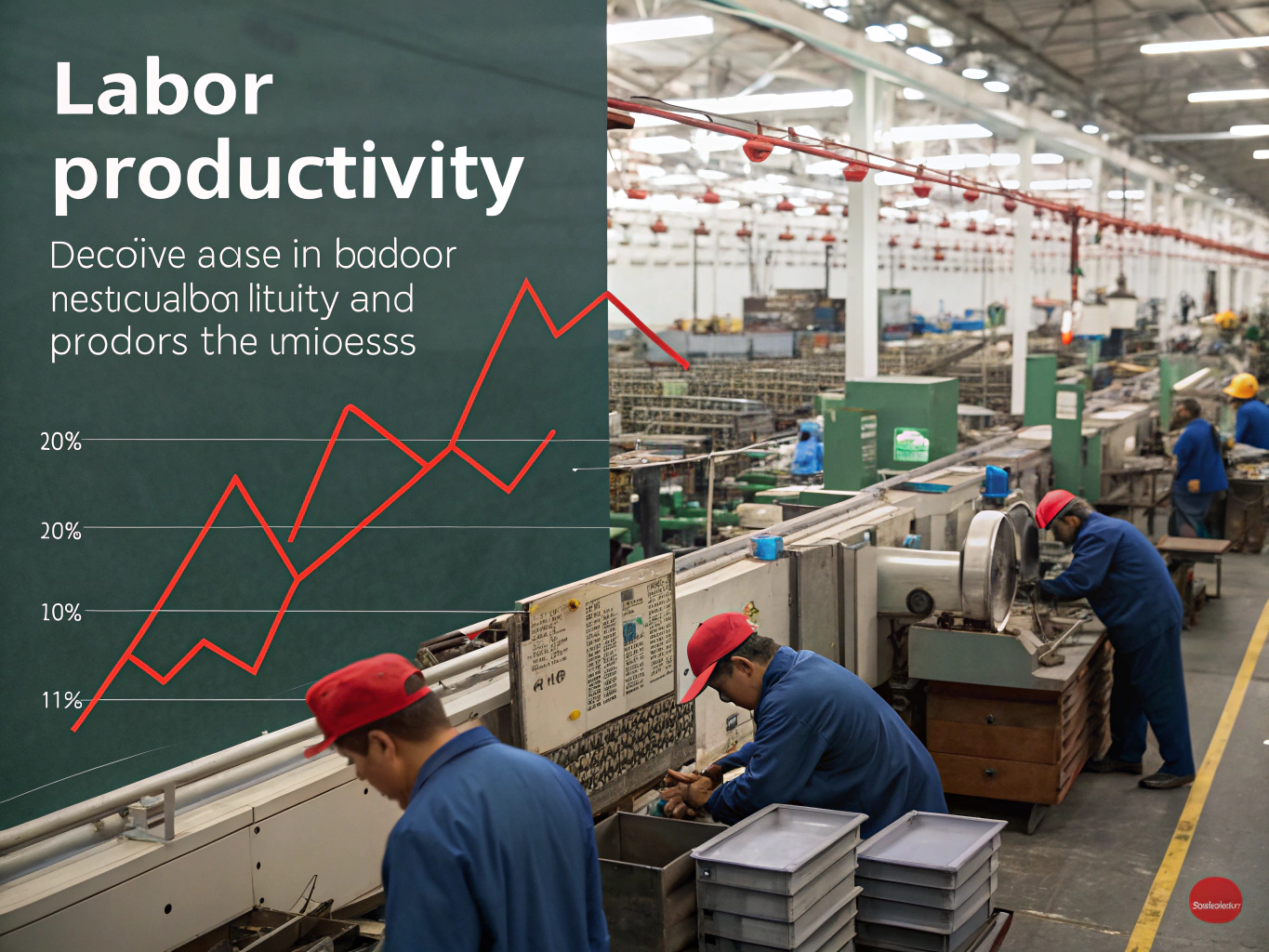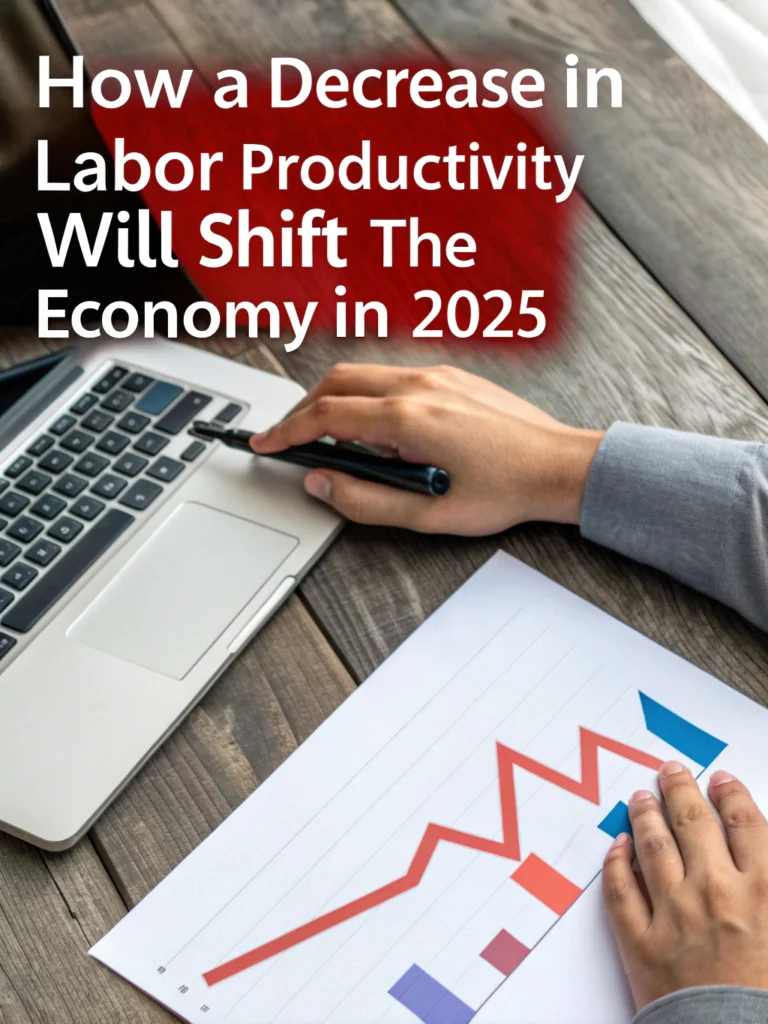How a Decrease in Labor Productivity Will Shift the Economy in 2025
In 2025, we might witness significant shifts in the economy largely due to a decrease in labor productivity. This drop isn't just a blip on the radar; it's a wake-up call for businesses, workers, and policymakers alike. But what does this really mean for the economy, and how can we prepare for the impending changes?
Understanding Decrease in Labor Productivity
A decrease in labor productivity refers to a decline in the efficiency with which labor input is converted into output. When productivity takes a hit, it means more hours worked without a corresponding increase in goods or services produced. This scenario often leads to various economic repercussions, particularly as we look ahead to 2025.
But why should you care? Because lower productivity doesn’t just impact wages; it also affects the overall economy, including economic growth, inflation, and unemployment rates. In fact, labor productivity and GDP are closely intertwined. Poor productivity can lead to stagnation in GDP, weakening economic growth prospects.
Factors Driving Economic Shifts in 2025
Several critical factors will contribute to the economic shifts in 2025 related to declining productivity:
- A slowdown in technological advancements.
- Changes in labor market trends, including aging populations.
- Economic policy shifts that may stifle business innovations or investments.
- Ongoing challenges such as supply chain disruptions or high inflation rates.
These factors create an environment where workforce efficiency changes become ever more crucial. Understanding these trends can help businesses adapt and thrive in the face of adversity.
The Impact of Low Productivity
The impact of low productivity can be devastating:
-
Wages and Living Standards: If businesses are producing less, they can't afford to increase wages. This leads to stagnant salaries and lower living standards for workers.
-
Inflation: When supply fails to keep up with demand due to lower productivity, prices for goods and services can rise. This inflationary environment can erode purchasing power.
-
Economic Growth: Sustained drops in productivity can lead to overall economic stagnation or even recession. This presents a dire situation for governments and businesses trying to navigate economic recovery.
-
Job Market: A decrease in labor productivity can lead to job losses as firms downsize in response to decreased output. Workers may find it challenging to secure positions, leading to higher unemployment rates.
Preparing for 2025: Strategies for Businesses and Workers
To brace for these changes, it's essential to adapt. Here are some strategies:
-
Invest in Training: Companies that invest in employee training can enhance skills and improve productivity.
-
Embrace Technology: Implementing new technologies can streamline processes and boost output.
-
Monitor Economic Trends: Keeping an eye on labor market trends and macroeconomic indicators can provide insight into impending challenges.
-
Diversify Roles: Encourage team members to diversify their roles and responsibilities, fostering collaboration and efficiency.
As we approach 2025, it’s essential to leverage tools that enhance productivity. Check out the AI for Productivity eBook + Checklist: Supercharge Your Efficiency in 2294 for practical methods to elevate productivity in your organization.
Conclusion
A decrease in labor productivity will shift the economy in 2025 in ways that may disrupt existing business models and worker routines. Being proactive is essential; understanding the relationship between productivity and GDP, alongside anticipating economic shifts in 2025, can equip businesses and workers to respond effectively.
If you want to master your focus and improve your time management, consider the ADHD Productivity Power Pack: Ebooks, Guides, Checklists, Workbook & Tools to Master Focus, Time Management & Organization. This collection can provide you with the guidance and tools necessary to navigate these turbulent times.
FAQs
Q1: What causes a decrease in labor productivity?
A: Several factors contribute, including technological stagnation, changes in labor market dynamics, and external economic pressures.
Q2: How does productivity affect the economy?
A: Productivity is directly linked to economic growth, wage levels, and employment rates. Low productivity can lead to economic stagnation.
Q3: What can businesses do to improve productivity?
A: Investing in employee training, embracing new technologies, and monitoring economic trends can significantly enhance productivity.
Q4: Why is 2025 a critical year for productivity?
A: Anticipated shifts in labor market trends and other economic factors in 2025 may heighten the importance of productivity in sustaining economic health.
Q5: How can I prepare for the changes in the economy due to low productivity?
A: Staying informed on trends and investing in personal and organizational productivity tools can help you adapt successfully.

The time for businesses and individuals to act is now. Being informed and prepared is the best way to tackle the challenges that a decrease in labor productivity will shift the economy in 2025.

